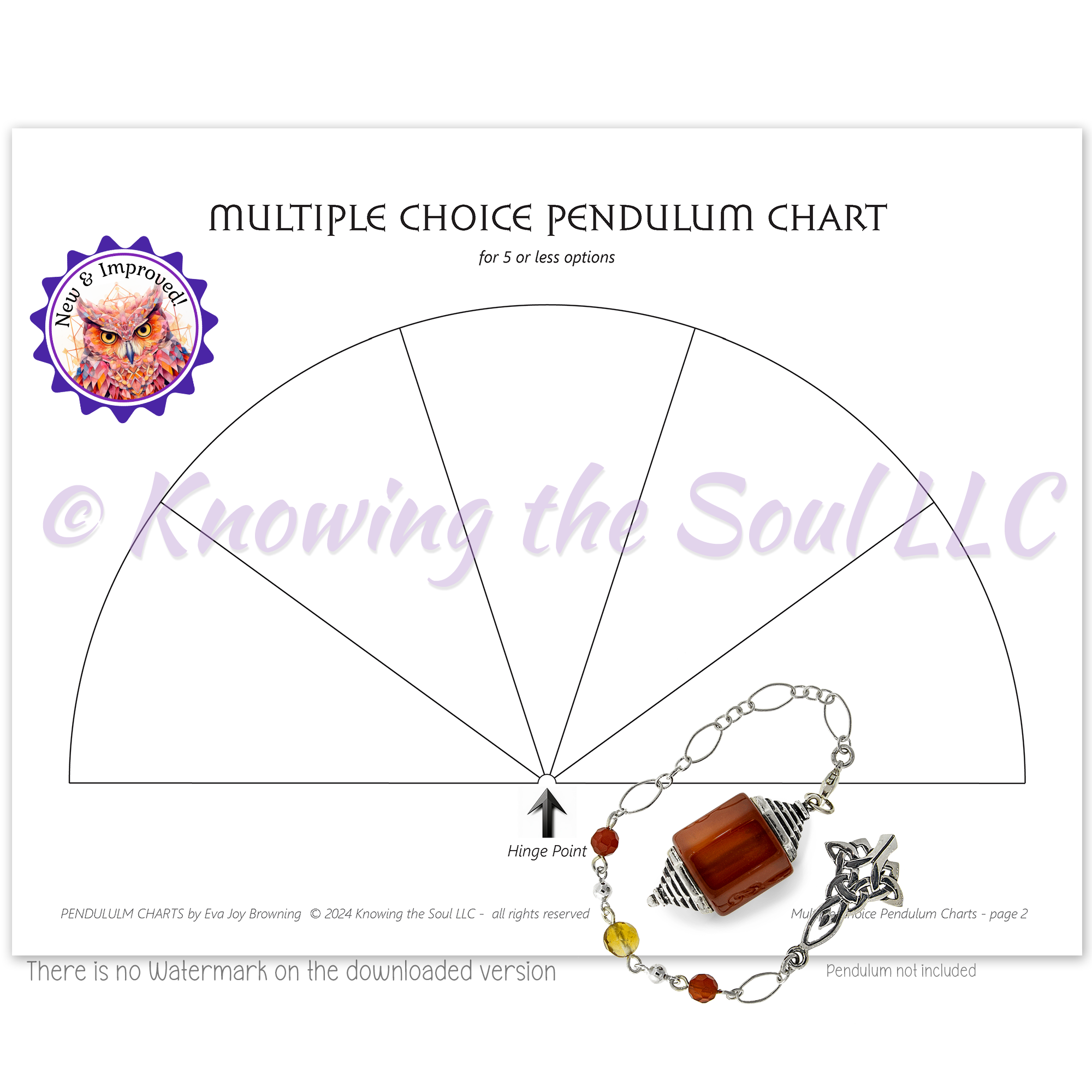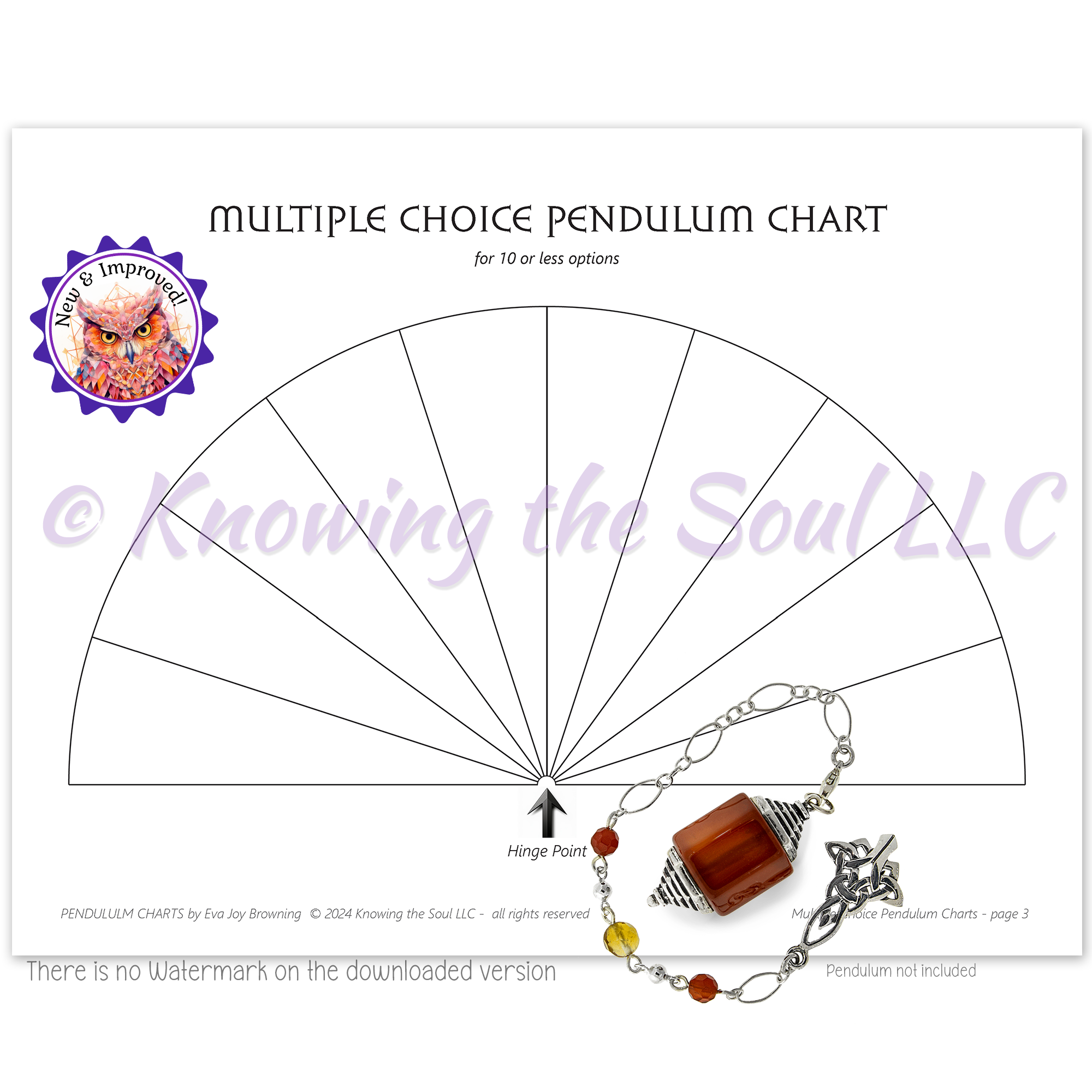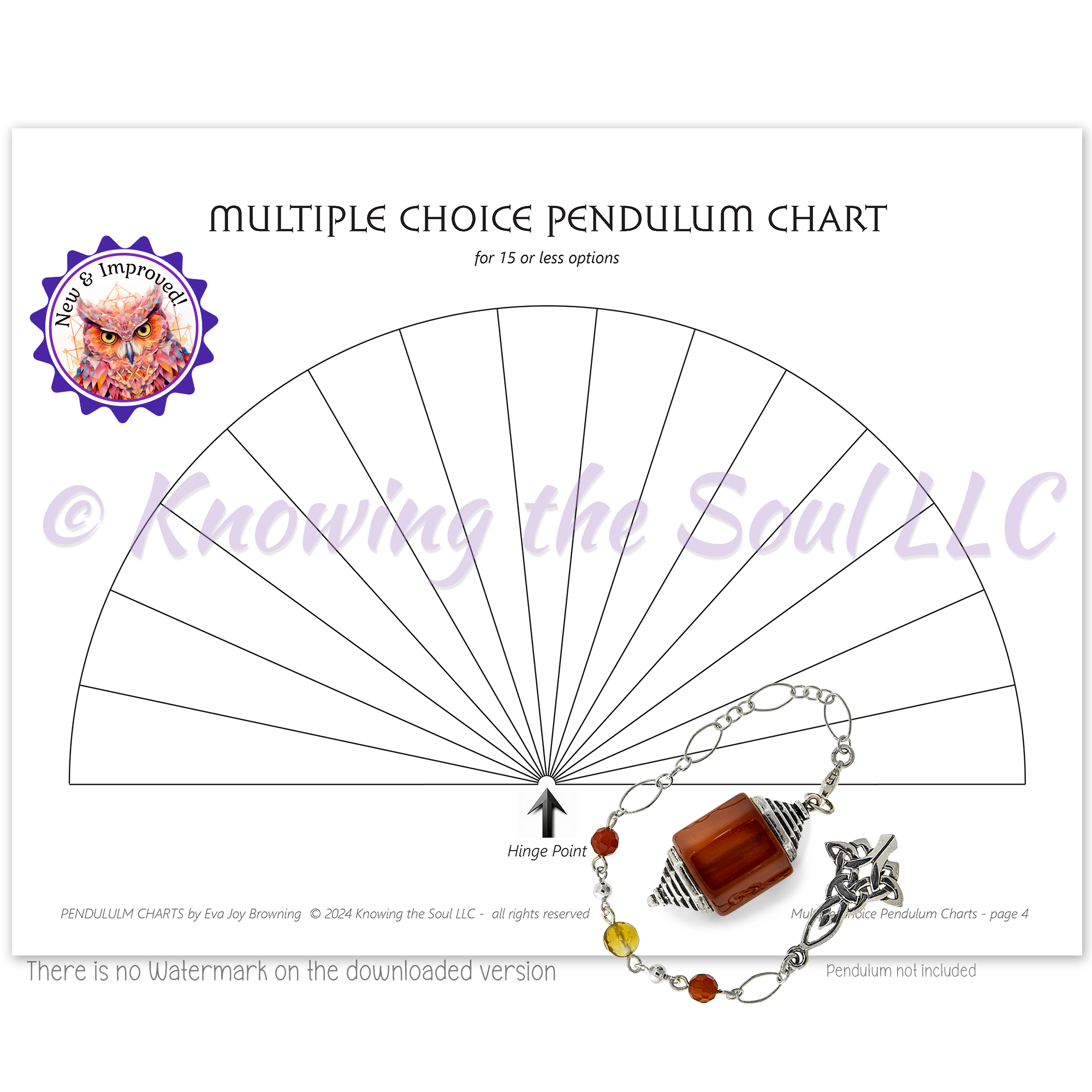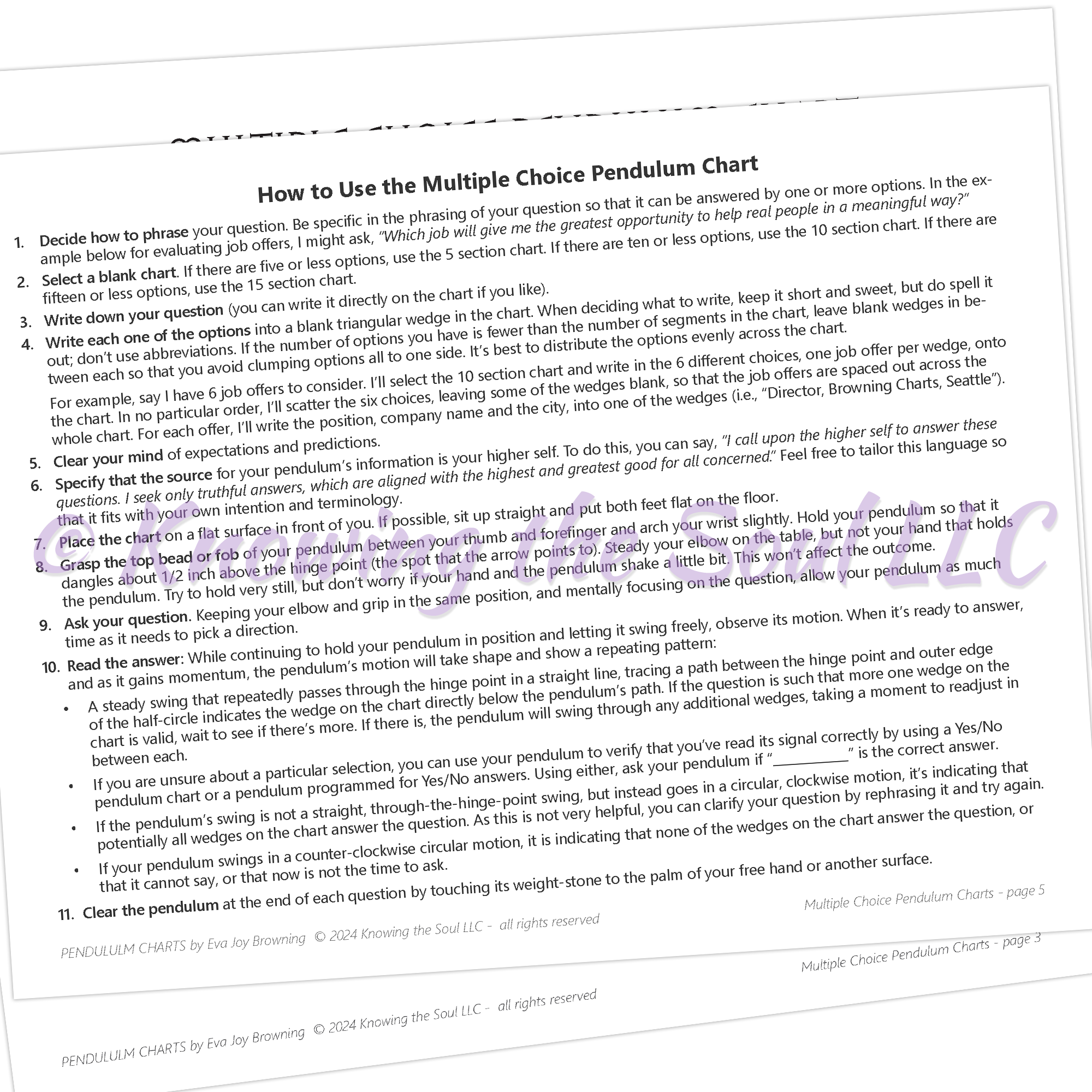Printable Multiple Choice Pendulum Charts (digital download) - Now includes 3 charts!
This product is available for purchase at our Etsy shop.
Life's full of multiple choice decisions. You can make great choices using your pendulum and these three multiple choice pendulum charts by Ask Your Pendulum®. There's one each: 5 sections, 10 sections, and 15 sections. This is a digital pdf file that you download and then print out on your own printer to use with a pendulum. Note: The purchased version of these charts does not have the copyright watermark on it. Updated instructions for use are included in the download.
Details
A note from the creator of Ask Your Pendulum: This chart is the product of my own hard work, research and/or creativity, to which I hold the copyright thereto and reserve all rights. If you are purchasing the download, you may print this chart out for your own use as often as you like. However, you may not distribute, publish, project in any way, or display on any internet website without my express written permission.
How to Use
- Decide how to phrase your question. Be specific in the phrasing of your question so that it can be answered by one or more options. In the example below for evaluating job offers, I might ask, “Which job will give me the greatest opportunity to help real people in a meaningful way?”
- Select a blank chart. If there are five or less options, use the 5 section chart. If there are ten or less options, use the 10 section chart. If there are fifteen or less options, use the 15 section chart.
- Write down your question (you can write it directly on the chart if you like).
- Write each one of the options into a blank triangular wedge in the chart. When deciding what to write, keep it short and sweet, but do spell it out; don’t use abbreviations. If the number of options you have is fewer than the number of segments in the chart, leave blank wedges in between each so that you avoid clumping options all to one side. It’s best to distribute the options evenly across the chart. For example, say I have 6 job offers to consider. I’ll select the 10 section chart and write the 6 different choices, one job offer per wedge, onto the chart. In no particular order, I’ll scatter the six choices, leaving some of the wedges blank, so that the job offers are spaced out across the whole chart. For each offer, I’ll write the position, company name and the city, into one of the wedges (i.e., “Director, Browning Charts, Seattle”).
- Clear your mind of expectations and predictions.
- Specify that the source for your pendulum’s information is your higher self. To do this, you can say, “I call upon the higher self to answer these questions. I seek only truthful answers, which are aligned with the highest and greatest good for all concerned.” Feel free to tailor this language so that it fits with your own intention and terminology.
- Place the chart on a flat surface in front of you. If possible, sit up straight and put both feet flat on the floor.
- Grasp the top bead or fob of your pendulum between your thumb and forefinger and arch your wrist slightly. Hold your pendulum so that it dangles about 1/2 inch above the hinge point (the spot that the arrow points to). Steady your elbow on the table, but not your hand that holds the pendulum. Try to hold very still, but don’t worry if your hand and the pendulum shake a little bit. This won’t affect the outcome.
- Ask your question, keeping your elbow and grip in the same position.
-
Read the answer: While holding your pendulum in position directly over the hinge point and letting it swing freely, observe its motion. While mentally focusing on the question, allow your pendulum as much time as it needs to pick a direction. When it’s ready to answer, and as it gains momentum, the pendulum’s motion will take shape and show a repeating pattern:
- A steady swing that repeatedly passes through the hinge point in a straight line, tracing a path between the hinge point and outer edge of the half-circle indicates the wedge on the chart directly below the pendulum’s path. If the question is such that more one wedge on the chart is valid, wait to see if there’s more. If there is, the pendulum will swing through any additional wedges, taking a moment to readjust in between each.
- If you are unsure about a particular selection, you can use your pendulum to verify that you’ve read its signal correctly by using a Yes/No pendulum chart or a pendulum programmed for Yes/No answers. Using either, ask your pendulum if “____________” is the correct answer.
- If the pendulum’s swing is not a straight, through-the-hinge-point swing, but instead goes in a circular, clockwise motion, it’s indicating that
potentially all wedges on the chart answer the question. As this is not very helpful, you can clarify your question by rephrasing it and try again.
- If your pendulum swings in a counter-clockwise circular motion, it is indicating that none of the wedges on the chart answer the question, or that it cannot say, or that now is not the time to ask. - Clear the pendulum at the end of each question by touching its weight-stone to the palm of your free hand or another surface.
Click here for more information about how to use your pendulum.






